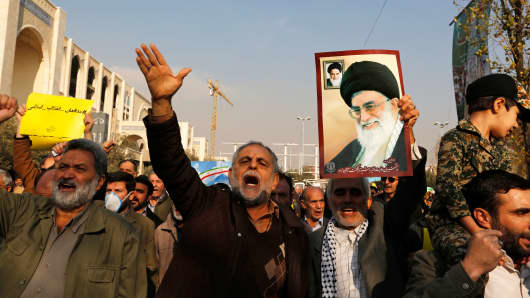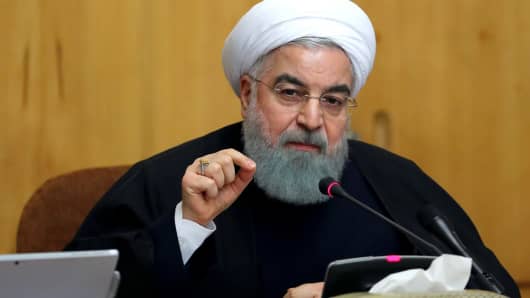Just a few minutes after President Trump said on Tuesday that the U.S. plans to pull out of the Iran nuclear deal, Hassan Rouhani, the country's president, stood defiantly, flanked by his cabinet, to say that he wanted to work with the remaining countries to keep the deal alive.
While Rouhani may have been sending a message to the U.S., his speech was also designed to reassure his own citizens that America's move wouldn't further damage the country's fragile economy. "He wanted to project calm and predictability," said Suzanne Maloney, a senior fellow at the Brookings Institution's Center For Middle East Policy.
That calm may not last long as renewed sanctions on Iran could, once again, send its economy into a downward spiral. Over the past several weeks, Iran's rial has lost 25 percent of its value against the U.S. dollar, while inflation is hovering at around 8 percent. Iranians are also struggling with a severe credit crisis that has seen several banks go bankrupt. Unemployment is above 11 percent and citizens have taken to the streets to protest mismanagement and government corruption.
The country's GDP has also suffered, going from 6.6 percent in 2010 to negative 1.5 percent in 2015, when sanctions were in full force, but it's rebounded since. The IMF was predicting GDP growth of 4.3 percent this year, but that could fall sharply after sanctions are re-imposed.



